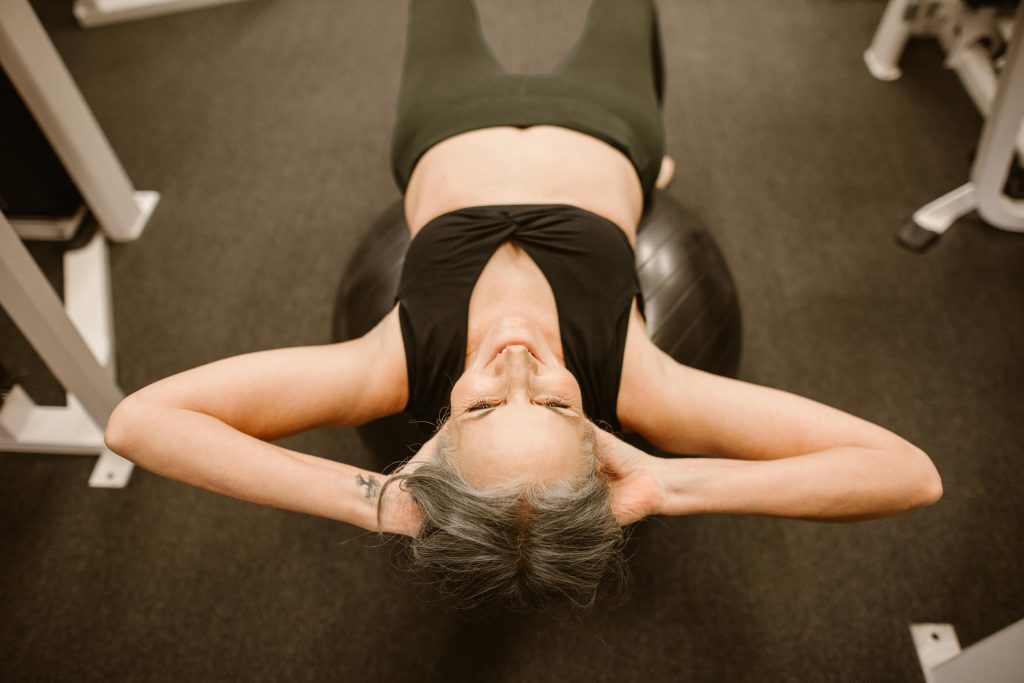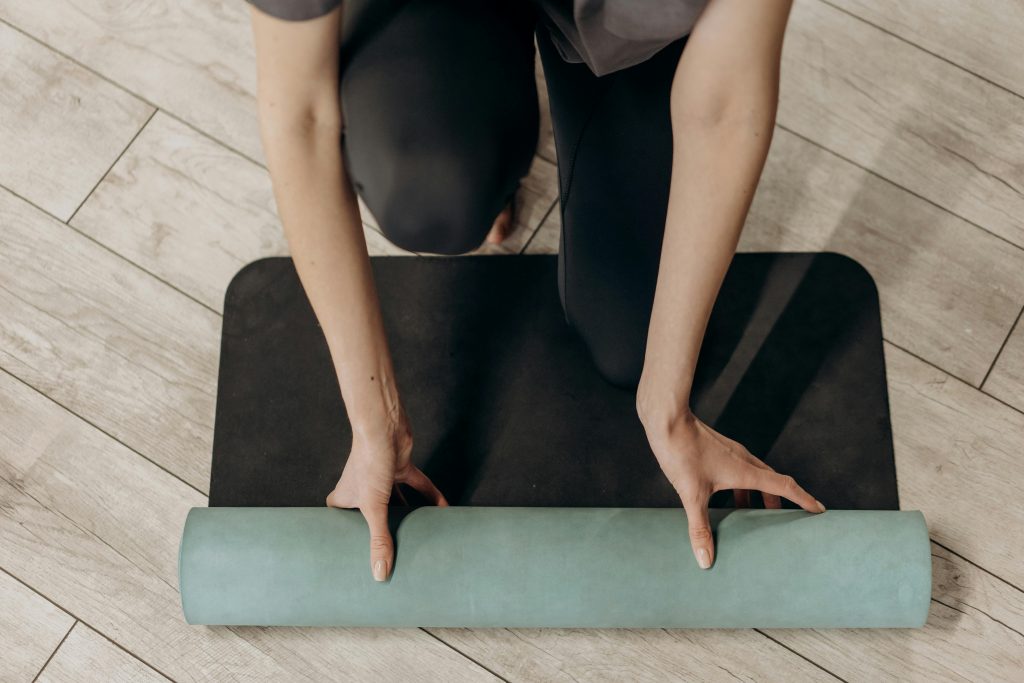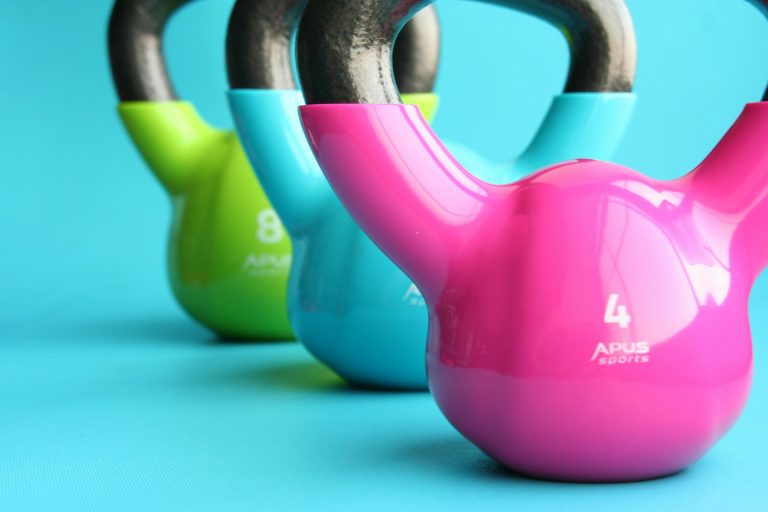
Introduction
Starting a strength training routine can be empowering especially as you work toward better health, energy and confidence. But for many—especially beginners or those over 45—the fear of injury can be a real barrier. The good news? You can start strength training without getting hurt by taking a smart gradual approach. In this guide we’ll walk you through safe, effective strategies to help you build strength, protect your joints and stay motivated—all while minimizing risk and maximizing results.
Have you ever been told that strength training is only for the young or already-fit? Think again! In fact, women over 45 can see tremendous benefits from resistance training—stronger bones, better balance, boosted metabolism, and even improved mood. But here’s the catch: many are afraid of getting injured or simply don’t know where to begin. A 2022 study from the Journal of Aging and Physical Activity found that 1 in 3 women over 45 avoid strength training due to fear of injury. If that’s you—you’re not alone. This guide will walk you through how to start safely and confidently, no matter your fitness background!

Why Strength Training Matters After 45
If you’re a woman over 45, you’ve probably heard about the benefits of strength training—but maybe you’re still unsure if it’s right for you. Spoiler alert: it absolutely is! Not only does strength training help you stay strong and independent, but it also plays a critical role in your bone health, muscle preservation, mental clarity, and ability to handle everyday tasks with ease. Beginner strength training for women can be a valuable tool in your arsenal against the impact of old age – it can future proof your body.
Let’s explore the four major ways strength training supports your health and well-being in midlife and beyond.
Strength Training Helps Preserve Bone Density
After age 45—and especially post-menopause—women face a higher risk of bone loss and osteoporosis. That’s because estrogen levels decline, which affects the body’s ability to maintain strong bones. The good news? Strength training is one of the best natural defenses.
By applying stress to your bones through resistance exercises like squats, lunges, and weighted movements, you encourage the body to strengthen and rebuild bone tissue. It’s like giving your bones a gentle wake-up call: “Hey, stay strong—we still need you!” Over time, this can lead to improved bone density and a lower risk of fractures.
It Fights Muscle Loss Due to Aging (Sarcopenia)
Sarcopenia—a term for age-related muscle loss—can sneak up on you in your 40s and 50s. Without regular resistance training, you could be losing muscle every year, which impacts your balance, metabolism, and overall energy.
Strength training counters this by stimulating your muscles to grow and stay strong. It doesn’t mean you need to lift heavy weights or spend hours at the gym. Simple routines with resistance bands, light dumbbells, or bodyweight exercises can help you maintain lean muscle, improve mobility, and feel more physically capable in your daily life. And, there’s an added bonus, building lean muscle gives a toned look and make your clothes fit better.
Your Brain and Mood Benefit, Too
Strength training isn’t just about looking strong—it’s about feeling strong, mentally and emotionally. Regular workouts can reduce stress and anxiety, improve sleep quality, and boost your overall mood through the release of feel-good hormones like endorphins.
There’s also growing evidence that resistance training supports cognitive health. It’s been linked to better memory, sharper thinking, and even a reduced risk of dementia. So when you’re lifting weights, you’re not just building biceps—you’re supporting your brain, too.
Functional Strength = Confidence in Daily Life
One of the most overlooked benefits of strength training is how it improves your everyday movements. Whether you’re carrying groceries, picking up grandkids, or climbing stairs, strength training prepares your body to handle these tasks with more ease and less strain.
This is called “functional strength,” and it’s key for staying independent and injury-free. The stronger your muscles and joints, the more confident you’ll feel navigating the physical demands of life—now and decades down the road.

Common Fears About Strength Training—And the Truth
There are many myths about strength training and women. Here I’ll debunk some of the more common myths.
“I’ll Get Bulky” – Myth Debunked
One of the most persistent myths about strength training is the fear that lifting weights will lead to a bulky, masculine physique. For women, especially over 45, this simply isn’t how the body works. Women naturally produce far less testosterone than men—one of the key hormones responsible for muscle growth.
Building significant muscle mass requires years of intense training, a surplus of calories, and specific genetic traits. What strength training does do is create leaner, more toned muscles, reduce body fat, and improve overall body composition, giving a sculpted, strong look—not a bulky one.
Fear of Injury: Why Proper Form Matters More Than Lifting Heavy
It’s completely normal to worry about injury, especially if you’re new to strength training or returning after years away. But the truth is, injury risk isn’t about the weight—it’s about the way you lift.
Proper form, controlled movements, and a gradual increase in resistance are far more important than how heavy the dumbbells are. Starting with bodyweight exercises or light resistance is not only safer but builds a solid foundation. In fact, strength training actually helps prevent injuries in daily life by improving joint stability, balance, and posture.
Feeling Out of Place or Intimidated in a Gym Setting
Walking into a gym for the first time—or after a long time away—can be intimidating, especially if you’re surrounded by people who seem to know what they’re doing. This feeling is incredibly common, but it’s also temporary. Remember, everyone was a beginner once. Most people at the gym are focused on their own workouts and not paying attention to others.
To ease into it, consider going during quieter hours, trying a beginner-friendly group class, or starting with home workouts. Confidence comes with repetition, and the gym can become a place of empowerment, not anxiety. It helps to select the proper gym for you – if the atmosphere is unfriendly or unwelcoming, then it is not the place for you.
Thinking It’s “Too Late” to Start
Another myth that holds many women back is the idea that if you haven’t started strength training by a certain age, the opportunity has passed. The truth? It’s never too late to start. In fact, strength training is one of the most effective ways to counteract age-related muscle loss, improve bone density, boost metabolism, and enhance quality of life.
Women in their 50s, 60s, and even 70s often experience life-changing benefits when they begin strength training. You don’t need a lifetime of fitness experience to start—just the willingness to take the first step.

Pre-Workout Preparation and Safety Tips
Good habits are vital from the very beginning. These safety tips will help you stay injury free and will allow you to grow your muscle groups correctly and effectively.
Importance of a Physical Checkup Before Starting
Before diving into any new fitness routine—especially strength training—it’s important to check in with your healthcare provider. This is particularly vital for women over 45, as underlying health conditions like high blood pressure, joint issues, or osteoporosis may influence your workout plan.
A physical check-up can help you understand your current health status, identify any limitations, and even uncover opportunities to safely improve mobility, strength, or endurance. With medical guidance, you can approach your training with confidence and peace of mind.
Choosing the Right Workout Clothes and Shoes
What you wear to work out can have a big impact on your comfort and safety. Choose moisture-wicking, breathable fabrics that allow full range of motion without restriction. For strength training, well-fitted clothing can help you move freely and maintain good form without excess fabric getting in the way.
Most importantly, invest in proper athletic shoes with good support and a firm sole. A stable shoe helps protect your joints, especially during weight-bearing movements like squats or lunges, and can reduce your risk of injury.
Hydration and Nutrition Basics Before Lifting
Fueling your body properly before a workout ensures you have the energy and stamina to get through your session safely. Aim to drink water at least 30–60 minutes before you start exercising to stay hydrated—this helps regulate your body temperature and joint lubrication.
A light snack that includes a mix of complex carbohydrates and a little protein (like Greek yogurt with fruit or a slice of whole-grain toast with nut butter) about 1–2 hours before your workout can provide steady energy without weighing you down.
Warm-Up Essentials to Prepare Joints and Muscles
Jumping straight into strength training without a proper warm-up is a fast track to injury, especially as we age. Warming up gradually increases your heart rate, loosens up stiff joints, and primes your muscles for movement.
Focus on dynamic stretches and bodyweight movements like arm circles, hip openers, marching in place, or gentle squats. Just 5–10 minutes of targeted warm-up can make your workout safer, more effective, and even more enjoyable.

Beginner Strength Training Exercises That Are Safe and Effective
Strength training can be simple and still be effective. Beginner strength training for women
These beginner training exercises will get you started and are the basis for more complex exercises as you progress.
Bodyweight Movements (e.g., Squats, Wall Push-Ups, Step-Ups)
Bodyweight exercises are an excellent starting point for beginners because they use your own body as resistance, minimizing the risk of injury while still building foundational strength.
Movements like squats strengthen your legs and hips, wall push-ups work your chest and arms without stressing your joints, and step-ups engage your entire lower body while improving balance. These functional exercises mimic daily movements—like getting out of a chair or climbing stairs—making them especially beneficial for maintaining independence and mobility as you age.
Resistance Bands and Light Dumbbell Routines
Resistance bands and light dumbbells are great tools for beginners because they allow for controlled, low-impact strength building. Resistance bands are gentle on the joints and perfect for targeting smaller muscle groups, such as the shoulders and hips, which are prone to weakness with age.
Light dumbbells (1–5 lbs to start) can be used for exercises like bicep curls, overhead presses, and lateral raises, offering a more gradual increase in strength without overwhelming the body. These tools are also portable and versatile, making it easy to stay consistent at home or while traveling.
Machines vs. Free Weights: Pros and Cons for Beginners
Strength machines provide guided movement and added stability, which can be incredibly helpful for beginners learning proper technique or managing balance issues. They’re great for isolating specific muscles and reducing the risk of form errors.
Free weights, on the other hand, require more control and engage stabilizing muscles, which can lead to more functional strength gains over time. For most beginners, a combination of both works well—machines for initial learning and safety, and free weights for progression and variety.
Proper Form Tips for Each Movement
Learning proper form is crucial to prevent injury and get the most out of each exercise. For squats, keep your feet shoulder-width apart, knees tracking over your toes, and your back straight—imagine sitting into a chair. For wall push-ups, keep your hands slightly wider than shoulder-width, engage your core, and maintain a straight line from head to heels. In step-ups, press through your entire foot and avoid using momentum.
When using resistance bands or dumbbells, move slowly and with control, avoiding jerky movements. It’s better to do fewer reps with great form than more with poor alignment.

How to Progress Without Injury
It can be very tempting to try to do everything all at once. We can throw ourselves into training only to get injured and disillusioned. Believe me – slow and steady is much more important than seeking quick results.
Why “Slow and Steady” Wins the Race
Rushing into a strength training routine can do more harm than good, especially for beginners. Adopting a “slow and steady” approach helps your body gradually adapt to new movements, build coordination, and strengthen supporting muscles.
It’s not about how fast you can progress—it’s about creating consistency and protecting your joints, muscles, and tendons from strain. Especially for women over 45, slower progression reduces the risk of injury while still yielding impressive results over time. Even if you are returning to the gym and to weight training after an extended break it is very important to build up the weight and intensity of your workouts.
How to Use Progressive Overload Without Overdoing It
Progressive overload—the gradual increase in resistance or challenge—is essential for building strength. But when done too aggressively, it can lead to strains, fatigue, or even serious injuries.
The key is to make small, intentional adjustments: adding a few extra reps, increasing weight slightly, or reducing rest time over weeks—not days. Tracking your progress and prioritizing form ensures your body adapts safely while still pushing your limits.
Rest Days and Active Recovery
Rest days are not lazy days—they’re when the magic of muscle growth and repair actually happens. Skipping rest in favor of more workouts often leads to burnout, plateauing, or injury. Incorporate at least 1–2 full rest days each week and use active recovery techniques like walking, gentle stretching, or yoga to promote circulation and reduce soreness. Your body needs time to recover, especially as it ages, and honoring that is crucial to long-term success.
Listening to Your Body: Signs of Overtraining vs. Normal Soreness
Understanding the difference between healthy muscle soreness and warning signs of overtraining is critical. Mild soreness that peaks 24–48 hours after a workout (DOMS) is normal, especially after new or more intense activity. But sharp pain, persistent fatigue, trouble sleeping, or mood changes can signal overtraining. Learning to tune in—rather than pushing through—helps you make smarter choices and stay consistent without setting yourself back.

Creating a Strength Routine That Works for You
Strength training can be a fantastic way to add to your fitness routine. It is wonderful to see muscle definition and the impact is has on your clothes and figure. So it’s vital to create a routine that works for you.
Weekly Beginner-Friendly Plan (2–3 Sessions/Week)
For beginners, especially those new to strength training, starting with 2–3 sessions per week is ideal. This frequency allows enough time for muscles to recover while still progressing toward your fitness goals.
Each session should focus on different muscle groups, such as upper body, lower body, and core, using a mix of bodyweight exercises, resistance bands, or light dumbbells. This schedule strikes the perfect balance, ensuring you build strength without overwhelming your body.
As you progress, you can gradually increase the intensity or frequency of workouts. Starting weights safely while using an appropriate female strength training guide will ensure that you are doing exercises beneficial to your health.
How to Balance Cardio and Flexibility with Strength Work
While strength training is important, balancing it with cardio and flexibility exercises can enhance overall fitness. Cardio, such as brisk walking, cycling, or swimming, helps maintain heart health and burn calories, while flexibility exercises like yoga or stretching improve mobility and prevent muscle stiffness.
A balanced routine might include strength training 2–3 times per week, with 1–2 cardio sessions and a flexibility-focused activity once a week. This combination ensures you’re not neglecting any aspect of fitness and reduces the risk of injury by keeping muscles and joints mobile.
At-Home vs. Gym Workouts: Customizing Based on Lifestyle
Whether you prefer working out at home or in a gym depends on your personal lifestyle and comfort. At-home workouts offer convenience and privacy, allowing you to exercise on your schedule with minimal equipment, such as resistance bands or dumbbells.
On the other hand, gyms offer a wider variety of machines, weights, and group classes. Both options can be effective—it’s about finding what suits your preferences and goals.
For beginners, starting at home with simple exercises can build confidence, while gradually incorporating gym visits for variety and access to more equipment can further challenge your body as you progress.
Tips for Building Consistency and Motivation
Staying consistent with a fitness routine can be one of the biggest challenges, but setting realistic goals and celebrating small wins can keep motivation high. Start by setting specific, attainable goals, like “I will do three 30-minute strength workouts this week.”
Consider tracking your progress in a fitness journal or using an app to log your workouts. Additionally, find a workout buddy or join a supportive fitness community to keep you accountable. Creating a routine that you enjoy—whether through variety, listening to music, or rewarding yourself after workouts—makes it easier to stay motivated over time.

Support, Guidance, and Accountability
Finding a Trainer Who Understands Midlife Fitness
When beginning a strength training routine at midlife, it’s essential to find a trainer who understands the unique challenges and goals of women over 45. A knowledgeable trainer can help you navigate age-related changes like reduced muscle mass, flexibility, and joint health and can devise an appropriate over 45 workout plan.
Look for trainers with certifications in working with older adults or experience in fitness for midlife women. They should emphasize proper form, gradual progression, and personalized programs that take into account any pre-existing conditions or injuries. A trainer who understands your needs can provide the right guidance to ensure that your workouts are safe, effective, and sustainable.
Joining Beginner-Friendly Fitness Communities (Online or Local)
Joining a fitness community can be an excellent source of motivation and support, particularly when starting a strength training journey. Whether it’s an online group or a local class, being part of a like-minded community helps you feel less isolated and more encouraged.
Many beginner-friendly fitness groups are specifically geared toward women over 45, providing a welcoming environment where you can ask questions, share experiences, and celebrate victories together. These communities often offer accountability, tips, and even social events that keep you connected to others who are on a similar fitness path.
Using Apps or Video Programs Tailored to Women Over 45
Technology has made it easier than ever to access fitness resources tailored specifically to women over 45. Many apps and video programs offer strength training routines, yoga, and flexibility exercises designed with midlife bodies in mind.
These programs typically take into account the physical changes women experience with age, such as hormonal fluctuations, joint stiffness, and muscle loss. Popular platforms may also offer progress tracking, reminders, and modifications based on individual fitness levels. Using these tools can help you stay on track, follow structured workouts, add progressive overload as a beginner and access expert guidance at your convenience.
How to Track Your Progress Safely and Positively
Tracking your progress in strength training is essential for staying motivated and understanding your growth, but it’s important to do so in a way that promotes a positive mindset. Rather than solely focusing on the numbers—like the weight you’re lifting—track non-scale victories such as increased energy, better sleep, or improved balance.
Record your achievements in a fitness journal, noting how you feel after each workout and any changes in how your body responds to exercises. Use progress pictures, measurements, or personal bests to track milestones in a holistic and empowering way, rather than fixating on perfection. Remember, slow and steady progress is key, and celebrating small victories keeps you motivated and on track. Preventing injury while exercising, while exercising correct form, will ensure you can strength train and gain the optimum benefit for your efforts.
Conclusion
Starting strength training over 45 doesn’t mean pushing yourself to exhaustion or risking injury. It means building a foundation of strength—safely, steadily, and with a purpose. With the right knowledge, support, and mindset, this can be a life-changing journey. Ready to take the first step? Lace up, start light, and remember: strength has no age limit.






